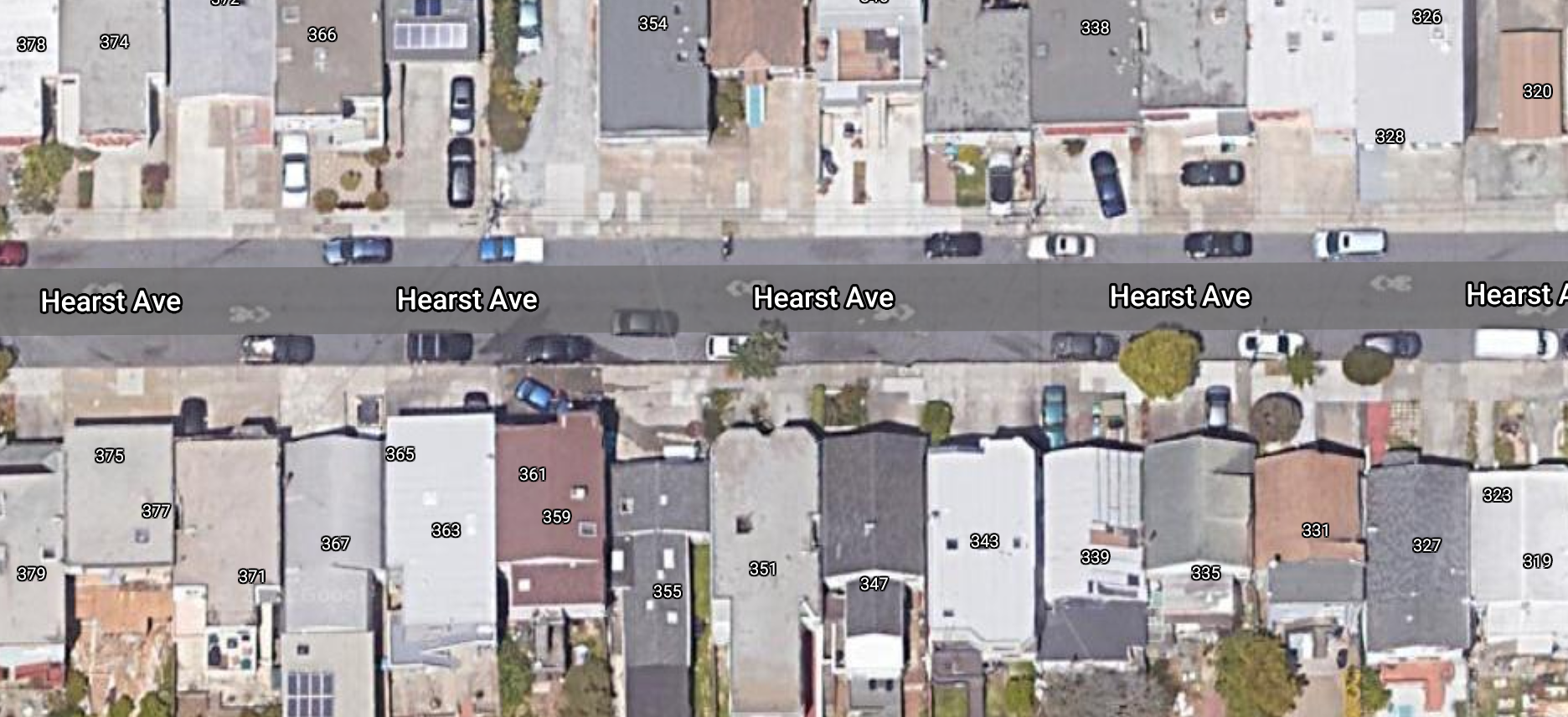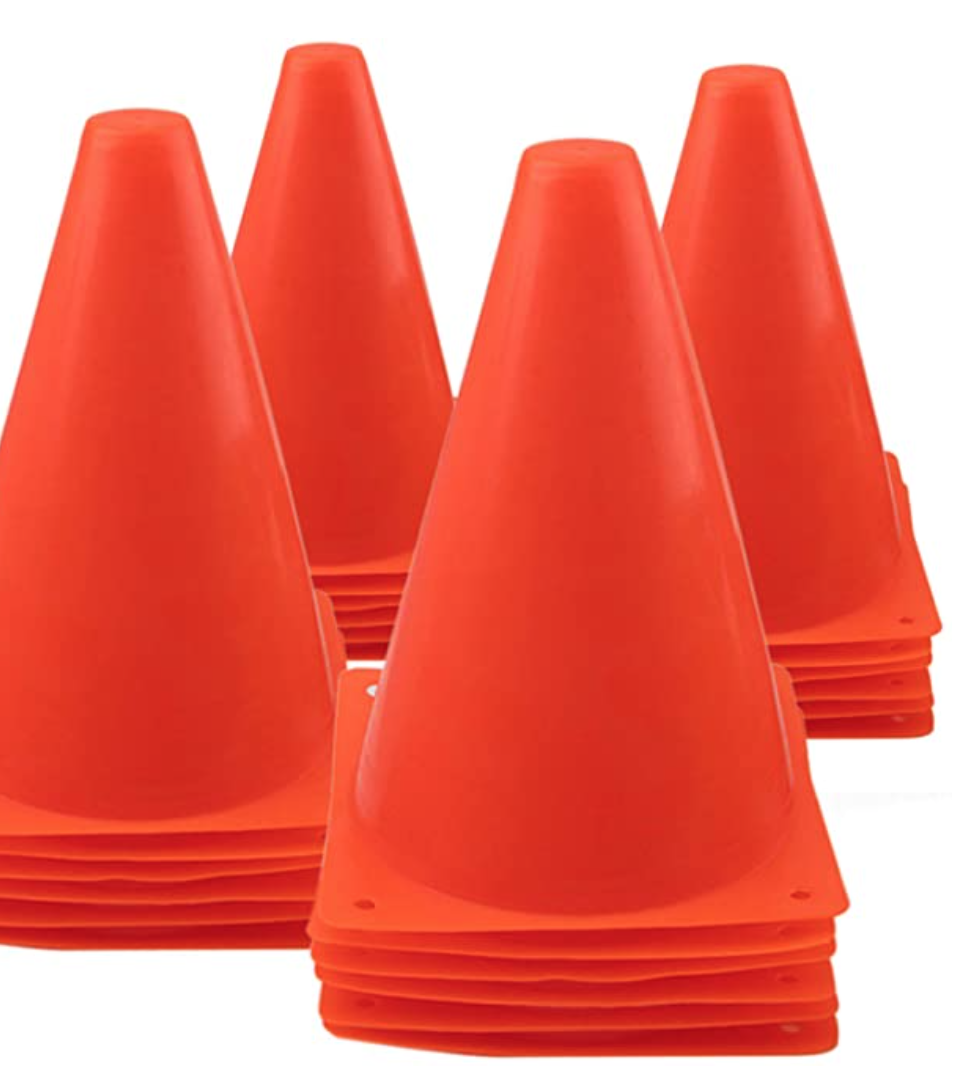We live on a street that's about 29 feet wide. There are parked cars on either side that take up about 7 feet each, which leaves 15 feet in the middle of the street for through traffic. There are hundreds or thousands of streets like this in San Francisco; here's a screenshot of one at random here.

Cars go really fast on our street - they'll gun it up to 35-40mph, but only when there's no traffic coming in the other direction. When traffic comes in the other direction they need to slow to steer between the oncoming car and the row of parked cars. Speeding cars are not safe for kids and they are leading sources of noise and air pollution.
If there are no cars coming, they can drive very quickly right down the middle of the street. So the obvious first step to slowing down traffic is don't let the cars drive in the middle of the street.
The SFMTA's program to address speeding involves adding a speed bump. A speed bump is very effective at slowing cars, but it's expensive and labor intensive. They only have the budget to address about 30-40 blocks a year.
What if we wanted to fix this for every residential block in the city? You'd want something that you could put in the very middle of the street, to prevent the behavior where cars drive very fast right down the middle. The ideal obstacle would be
- cheap
- would not cause any damage to the car
- very visible
- easy to move if necessary
I think a seven inch tall plastic soccer cone fits these criteria. You can buy them on Amazon for less than $1 each.

With a cone in the street, cars would either need to drive over it (undesirable) or around it, which would force them to slow down because there's a lot less space between the cones and the lane of parked cars.
My theory is that this would slow down cars a lot. It's cheap to test! Let me know if you are interested in trying it.
Measuring
To convince the MTA you'd want to do a test to see whether the cone is bringing down speeds. To do this, pick an hour during a weekday and count the car traffic — speeding vs. non-speeding, and then deploy the intervention the next day or next week during the same hour, and count the car traffic, speeding vs. non-speeding. You can then do a statistical test to determine if the results are significant.
You can buy a radar gun for about $100 to measure car speeds, which would be more accurate than eyeballing "speeding" vs. "not speeding" or have someone who doesn't know about the experiment (and can't see the cones) make the judgments.
Liked what you read? I am available for hire.
